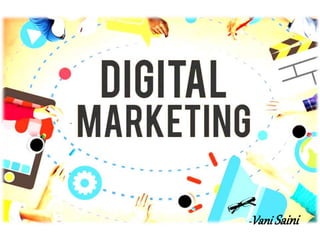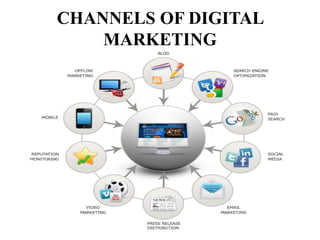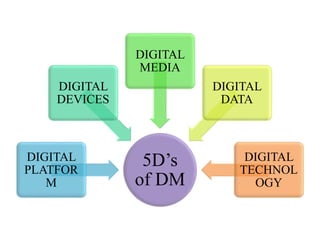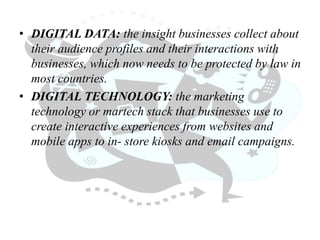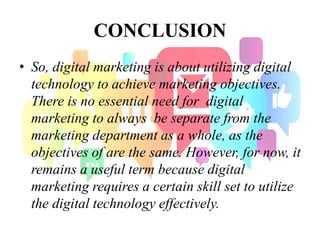Digital marketing
- 1. -VaniSaini
- 2. WHAT IS DIGITAL MARKETING? At a high level, digital Marketing refers to the advertising delivered through digital channels such as search engines, websites, social media, email, and mobile apps.
- 5. • DIGITAL DEVICES: audiences experience brands as they interact with business websites and mobile apps typically through a combination of connected devices including smart phones, tablets, desktop computers, TVs etc. • DIGITAL PLATFORMS: most interactions on these devices are through a browser or apps from the major platforms or services, that’s Facebook, Google, Twitter, LinkedIn, etc. • DIGITAL MEDIA: different paid, owned and earned communication channels for reaching and engaging audiences including advertising, email, search engine and social networks.
- 6. • DIGITAL DATA: the insight businesses collect about their audience profiles and their interactions with businesses, which now needs to be protected by law in most countries. • DIGITAL TECHNOLOGY: the marketing technology or martech stack that businesses use to create interactive experiences from websites and mobile apps to in- store kiosks and email campaigns.
- 7. CONCLUSION • So, digital marketing is about utilizing digital technology to achieve marketing objectives. There is no essential need for digital marketing to always be separate from the marketing department as a whole, as the objectives of are the same. However, for now, it remains a useful term because digital marketing requires a certain skill set to utilize the digital technology effectively.
